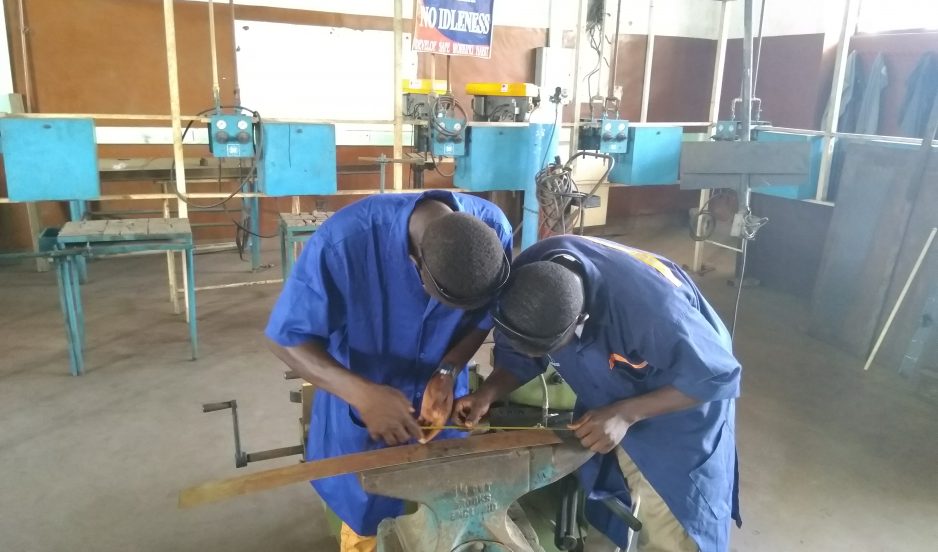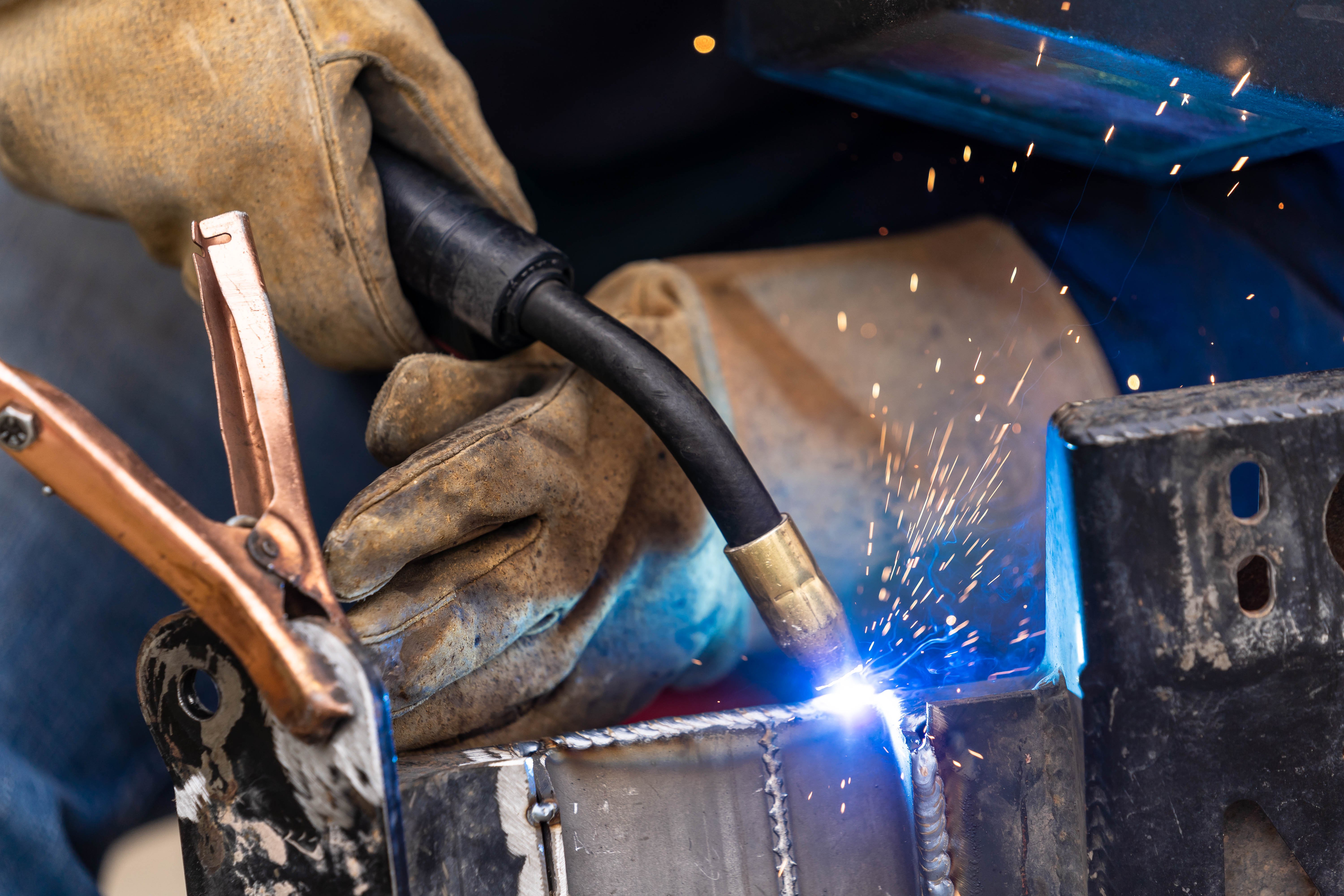Typical Welding Repair Issues and Just How to Address Them Effectively
Welding fixings commonly come across a variety of problems that can threaten the integrity of the end product. Usual issues consist of poor penetration, porosity, and imbalance, amongst others. Each defect presents special obstacles that need particular techniques for resolution. Comprehending these issues is necessary for welders aiming to improve their results and abilities. This discussion will explore these common welding fixing issues and effective approaches to address them.
Inadequate Infiltration
Inadequate infiltration takes place when the weld steel fails to fully fuse with the base material, leading to weak joints and potential structural failings. This issue often comes from insufficient warmth input, incorrect electrode angle, or inappropriate welding rate. Welders might experience inadequate infiltration due to a mistake of the needed specifications for a particular product density or kind. In addition, contamination on the base product's surface can impede effective bonding, intensifying the trouble. To resolve insufficient infiltration, welders ought to guarantee proper setups on their equipment and maintain a clean work surface. Regular inspection of welds is recommended to determine any shortages early, permitting timely adjustments and the prevention of compromised structural integrity in bonded settings up.
Porosity
Porosity is a common flaw in welded joints that materializes as tiny gas bubbles caught within the weld steel. This problem can endanger the integrity of the weld, bring about lowered stamina and possible failing under tension. Fabrication. Porosity normally develops from contamination, moisture, or improper welding methods, which allow gases to get away into the liquified weld pool. To resolve porosity, welders ought to assure correct surface prep work, maintain a clean functioning setting, and use ideal welding specifications. Additionally, choosing the ideal filler material and protecting gas can reduce gas entrapment. Routine examination and screening of welds can assist recognize porosity early, guaranteeing prompt rehabilitative actions are taken, thereby maintaining the top quality and reliability of the bonded framework
Imbalance
Imbalance in welding can emerge from various factors, consisting of improper arrangement and thermal expansion. Understanding the origin is vital for effective resolution. A number of adjustment methods are readily available to realign parts and assure structural honesty.
Sources of Imbalance
Welding imbalance typically stems from a variety of underlying issues that can jeopardize structural integrity. One primary cause is improper fit-up of components before welding, which can bring about gaps and uneven surface areas. Variants in thermal development throughout the welding process can likewise lead to distortion, specifically if the products being joined have different coefficients of expansion. In addition, poor securing and fixturing may stop working to hold parts securely in area, leading to movement throughout welding. Badly maintained equipment, consisting of welding equipments and tools, may present disparities in the weld bead, further adding to misalignment. Operator error, stemming from not enough training or experience, can additionally play a substantial function in producing misaligned welds.

Improvement Strategies Readily Available
Addressing imbalance successfully requires a mix of corrective strategies tailored to the certain problems at hand. One common method is making use of fixtures or jigs to hold components in the proper placement throughout welding, making sure consistent positioning. Furthermore, preheating the materials can help in reducing distortion and boost fit-up. For considerable imbalance, mechanical adjustment methods, such as making use of hydraulic jacks or clamps, can be utilized to fix the placement prior to welding. Post-weld warmth therapy may additionally be essential to eliminate stresses triggered by imbalance. Mindful evaluation and change throughout the setup phase can prevent misalignment problems from becoming considerable problems, promoting a smoother welding procedure and boosting overall structural stability.
Distortion
Distortion is an usual difficulty in welding that can occur from various elements, consisting of irregular heating & cooling. Comprehending the reasons for distortion is essential for executing reliable avoidance techniques. Addressing this concern not only improves structural stability yet additionally boosts the total high quality of the weld.
Reasons for Distortion
When based on the intense warmth of welding, products frequently undertake modifications that can result in distortion. This sensation largely emerges from thermal expansion and contraction during the welding process. As the weld location heats up, the product expands; upon cooling, it contracts, which can develop internal stresses. Additionally, unequal home heating across a work surface can exacerbate these anxieties, resulting in bending or flexing. The kind of product also plays a significant duty; metals with varying thermal conductivity and coefficients of growth may respond in different ways, leading to unpredictable distortions. Bad joint style and inadequate fixturing can add to imbalance throughout welding, boosting the chance of distortion. Recognizing these causes is important for effective welding repair and avoidance techniques.
Avoidance Techniques
Efficient prevention methods for distortion during welding emphasis on controlling warmth input and making sure proper joint style. Keeping a consistent heat input assists to lessen thermal expansion and tightening, which can result in distortion. Making use of techniques such as pre-heating the work surface can likewise minimize the temperature slope, promoting uniform home heating. In addition, picking appropriate joint styles, such as T-joints or lap joints, can enhance security and lower anxiety focus. Applying proper fixturing to secure the workpieces in area better help in maintaining positioning throughout the welding procedure. Staggered welding sequences can distribute warmth more equally, stopping local distortion. By using these methods, welders can greatly lower the likelihood of distortion and enhance the total top quality of their welds.
Breaking
Splitting is a common issue encountered in welding repairs, often resulting from different variables such as inappropriate cooling prices, product option, or inadequate joint preparation. The event of fractures can considerably endanger the honesty of the weld, resulting in potential failures throughout operation. To address this problem, welders must first analyze the origin, making certain that products work and suitably picked for the particular application. Additionally, regulating the air conditioning price throughout the welding process is crucial; fast air conditioning can cause anxiety and lead to breaking. Correct joint layout and prep work also add to minimizing the threat. Executing these approaches can enhance weld top quality and durability, eventually lowering the likelihood of splitting in ended up weldments.

Incomplete Blend
A substantial issue in welding repair services is insufficient combination, which happens when the weld steel does not properly bond with the base product or previous weld passes - Montana Mobile Welding and Repair Fabrication. This issue can bring about weaknesses in the joint, potentially jeopardizing the integrity of the welded framework. Variables adding to incomplete combination consist of not enough heat input, incorrect welding technique, and contamination of the surfaces being signed up with. To resolve this problem properly, welders should assure appropriate pre-weld cleaning and surface area prep work, as well as adjust their welding specifications to accomplish adequate penetration and fusion. Normal assessment during the welding process can additionally aid determine insufficient blend early, allowing for prompt rehabilitative measures to boost the total high quality of the weld
Overheating
While welding repair work can enhance architectural honesty, overheating offers a considerable challenge that can cause material destruction. Extreme warmth during welding can alter the mechanical buildings of steels, resulting in lowered stamina, boosted brittleness, and bending. This sensation is especially important in high-stress applications where architectural reliability is critical. Identifying getting too hot can include aesthetic assessments for staining or distortion, as well as monitoring temperature during the welding procedure. To minimize the dangers connected with overheating, welders need to use proper techniques, such as regulating warm input, changing traveling rate, and utilizing suitable filler materials. Additionally, executing pre- and post-weld warm therapies can assist recover product residential or commercial properties and improve the general high quality of the fixing, making sure long-term efficiency and safety and security.
Frequently Asked Concerns
What Are the Common Signs of a Welding Issue?

Exactly How Can I Test My Welds for Top quality?
To test welds for high quality, one can utilize aesthetic inspections, ultrasonic screening, and radiographic approaches. Each method assures structural stability, identifies flaws, and verifies adherence to specified requirements, eventually enhancing the dependability of the bonded joints.
What Safety Precautions Should I Take While Welding?
When welding, one need to focus on safety and security by wearing suitable individual protective equipment, guaranteeing correct air flow, securing combustible products away, keeping a clean work space, and recognizing surroundings to avoid injuries and accidents.
Can I Repair a Weld Without Renovating the Entire Joint?
Repairing a read more weld without remodeling the entire joint is possible, depending upon the damage (Montana Mobile Welding and Repair). Methods such as grinding, including filler material, or utilizing a welding process can efficiently deal with details imperfections while protecting the bordering structure
What Equipment Are Important for Reliable Welding Fixes?
Important devices for effective welding repair work consist of a welding machine, wire brush, grinder, protective gear, clamps, and filler products. Each device plays an important duty in ensuring top quality and security during the repair service procedure. Porosity typically arises from contamination, wetness, or incorrect welding methods, which allow gases to run away into the liquified weld pool. Inadequately conserved equipment, consisting of welding makers and devices, might introduce disparities in the weld grain, more adding to imbalance. When subjected to the intense warm of welding, products often undergo adjustments that can lead to distortion. Splitting is a typical problem encountered in welding repair work, commonly resulting from various factors such as improper cooling rates, material selection, or poor joint preparation. A significant problem in welding repairs is insufficient fusion, which occurs when the weld metal does not appropriately bond with the base product or previous weld passes.